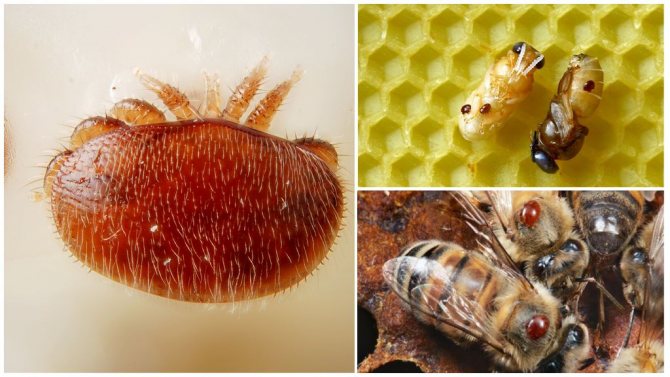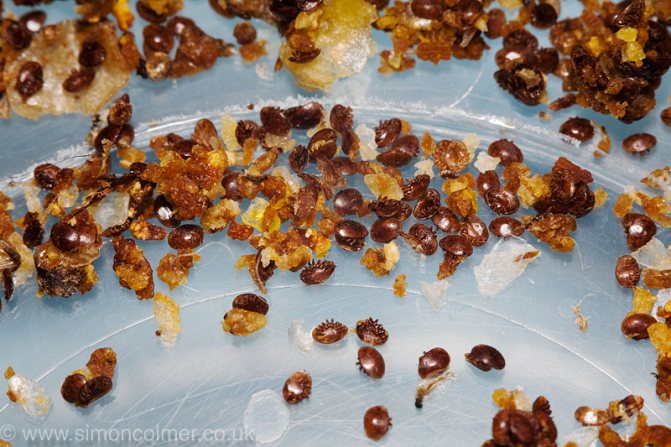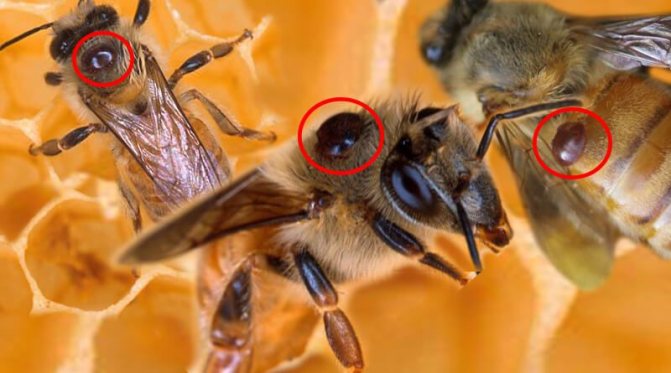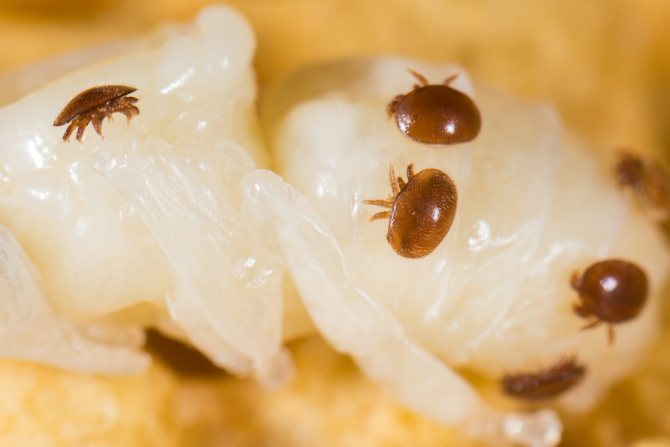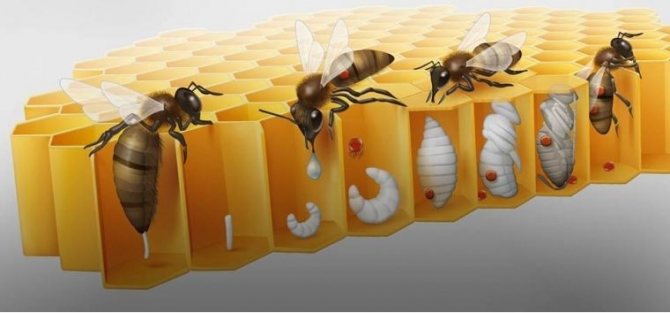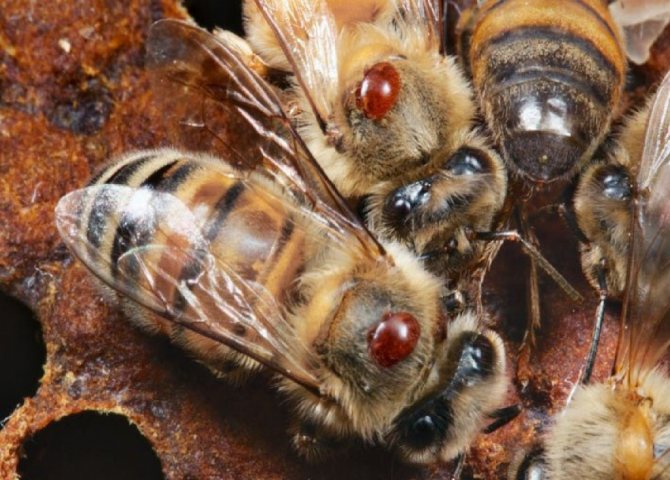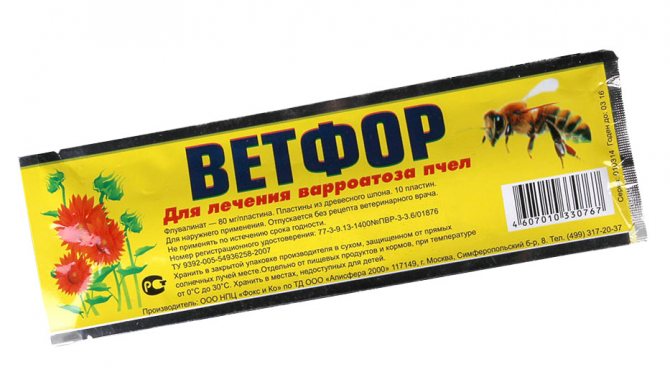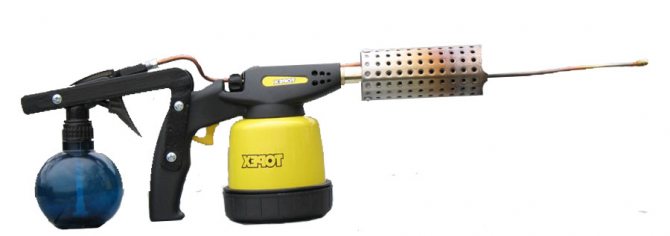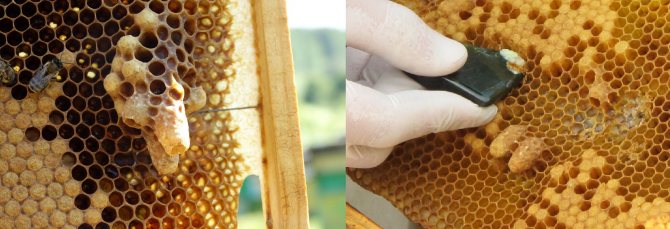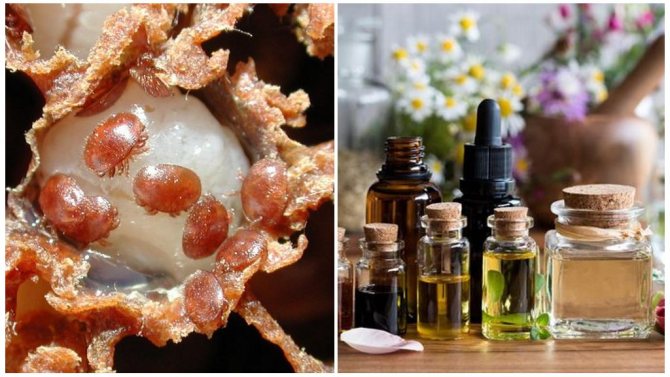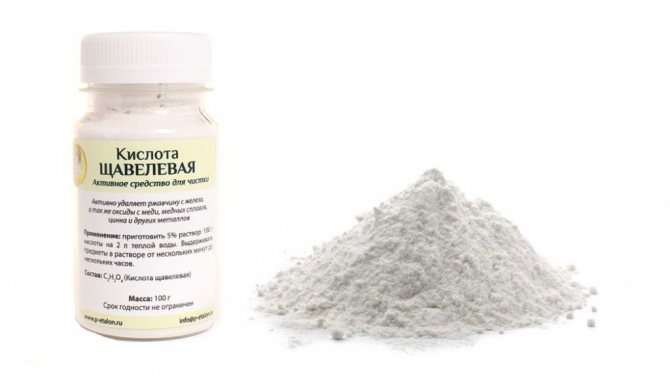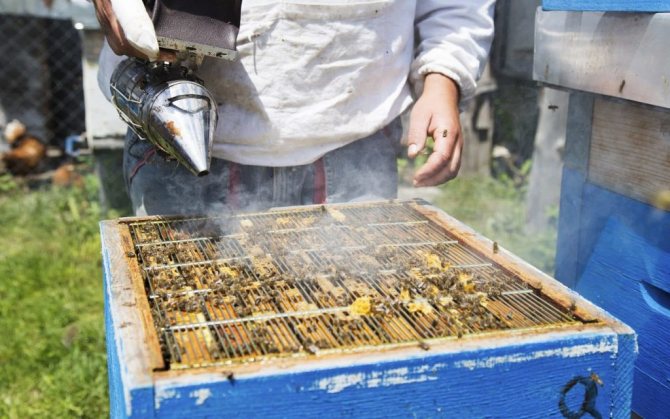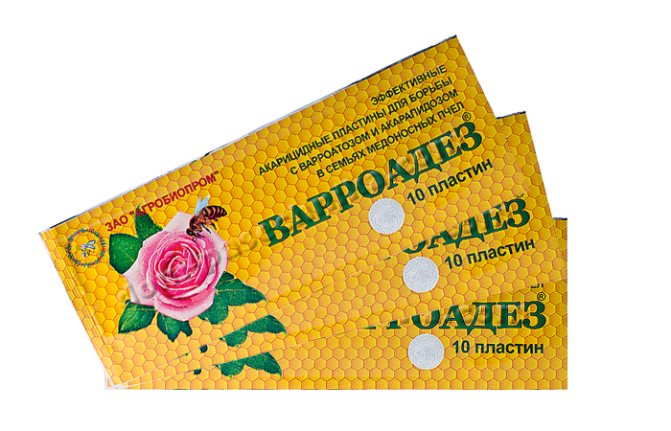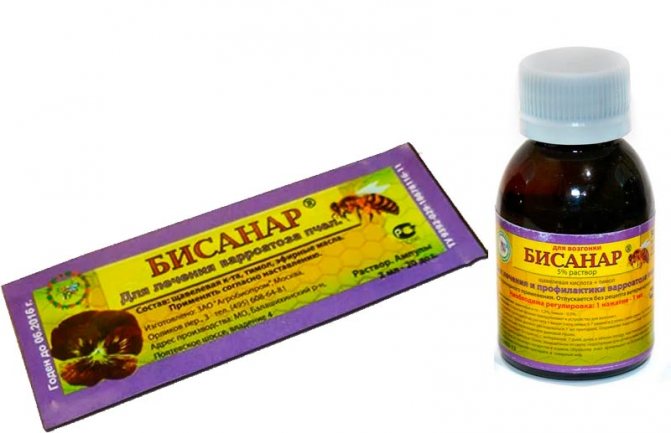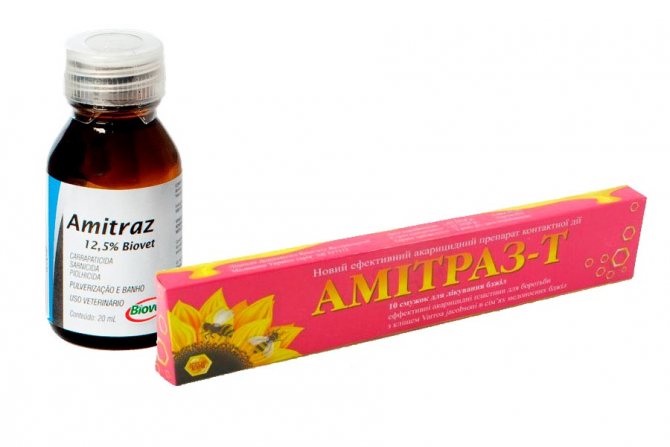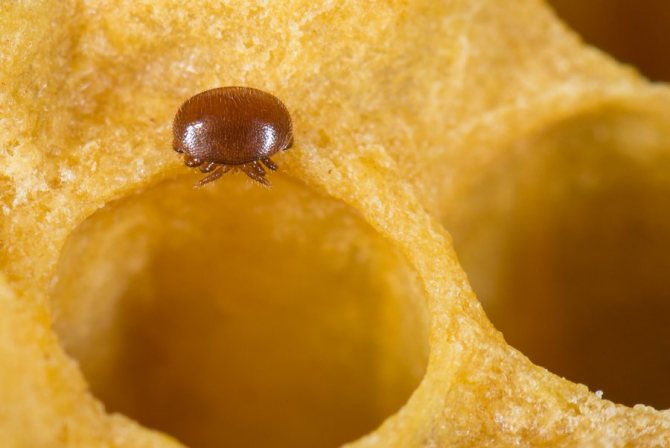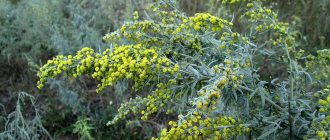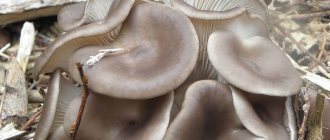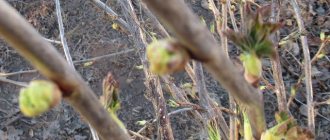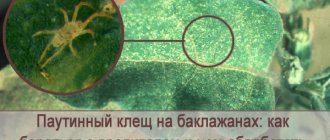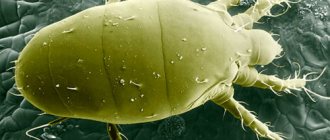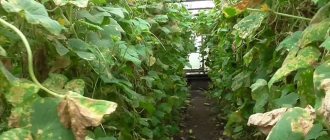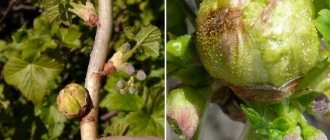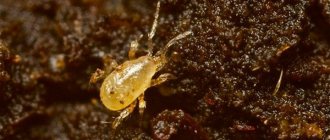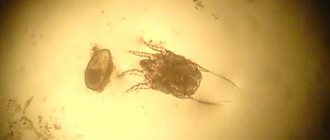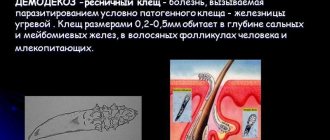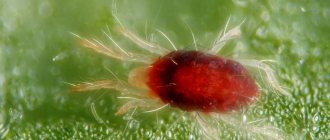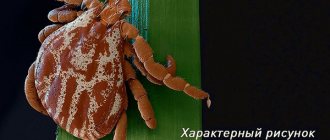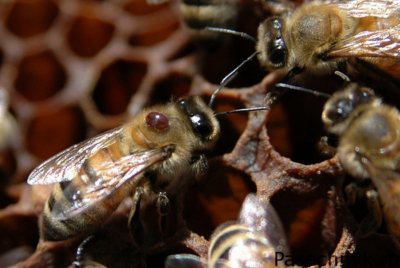
Varroatosis is one of the most dangerous, complex diseases among bees. If you use modern methods of tick control, you can prevent the danger of spreading the infection throughout the apiary. This mite is capable of developing in bee brood. Therefore, it is problematic to liquidate it. It is tightly protected by wax honeycombs. Many medicines and traditional medicine are known that are used in the fight against such a tick.
Description
This type of mite parasitizes bees, which is very inconvenient and dangerous, since there is a possibility of infection with dangerous diseases. Their body is oval in shape, have 4 pairs of legs, which are covered with fine hairs. They adhere very well to any surface.
Females and males have several differences. The female has a brown body, they can be clearly seen on the insect, since their size reaches 1.6-2 mm. The proboscis, which the female punctures and feeds on, is hidden under the body. They feed on the blood of not only adults, but also attack pupae and larvae.
Regarding their differences, it should be noted that females can regulate and control their breathing, thanks to the peritreme tube, which has a movable part. Also, the differences include a rather specific shape of the calf, but it allows you to perfectly hold on to your victim. In addition, the cover of their body has a springy structure, which prevents them from sticking to surfaces in the bee house.
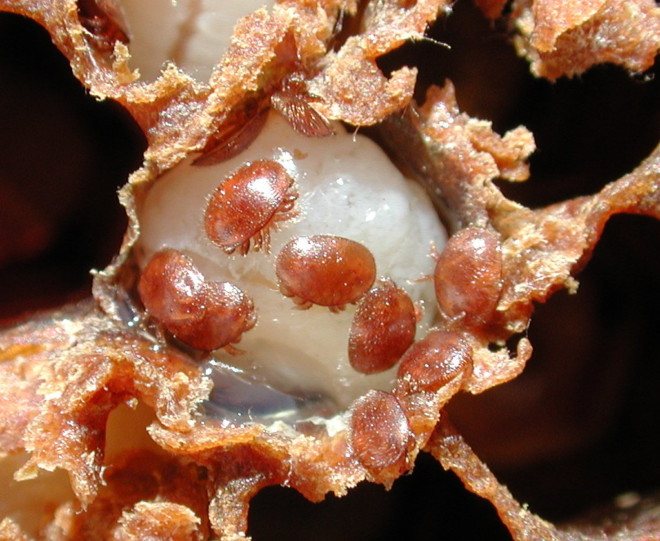

With respect to males, they differ significantly from females. Their body size is much smaller, the color is light gray, and may have a yellow tint. There are suction cups on the legs, thanks to which they adhere well to any surface. The pharynx is poorly developed and has practically no muscles. But the proboscis in this case is intended only for the fertilization of females. In the photo you can see what the tick looks like.
Bee tick: photo
These photos show the Varroa bee mite under a microscope:
What the Varroa mite really looks like is shown in this video:
Life cycle
The life cycle of the parasite is rather short, the longest in winter and is about 5 months, and in summer 2-3 months. But at the same time, in winter, their population is significantly reduced, because in the absence of brood, parasites do not multiply and up to 10% of the colony perishes.
In spring and summer, on the contrary, an increase in the population of ticks occurs. This is the ideal time for reproduction, their number increases 20 times. Females can survive outside bee colonies, for example, in empty hives, in open and sealed brood, on insect carcasses.
On average, a female can do without food for up to 6 days, but for this a sufficiently high temperature of 22-25 ° is a prerequisite. When the air temperature is lower, the parasite does not die, it simply waits in the honeycomb cell. In addition, when the female feels harmful substances in the air, she also hides, while she stops breathing. This behavior makes it much more difficult to deal with them.
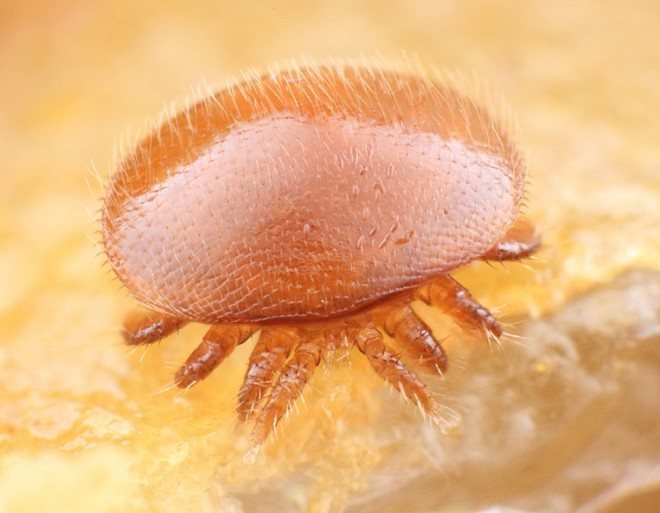

Females lay eggs in cells, one egg every five days. The size of the egg is 0.5 mm, and the larva develops in it.Further, the larva develops and grows into a nymph. The size of the nymph is 0.7 mm, they already have 4 pairs of limbs. Further, the individual moults and the stage of deutonymph development comes, individuals increase in size. At this stage, they have a very light body color, one might say white. The chitinous carapace is not matured, rather soft in structure. Regarding males, they, after fertilizing a female, die, therefore only females parasitize on bees.
The spread of parasites is as follows. When young insects have reached the end of development in the cell, they leave it. Ticks also climb on such young bees, they can parasitize on the victim until the next clutch of eggs, or move to other bees.
If you do not take any measures to combat parasites, then unhindered reproduction leads to the emergence of huge populations. Large colonies of ticks can lead to the death of the entire bee colony.
Preparations based on amitraz - Bipin, Apitak, etc.
Currently, the bulk of beekeepers prefer heavy acaricides based on amitraz (Tactic, Bipin, Bipin-T, APITAK, etc.) - short-acting drugs. Recent studies by scientists of amitraz and its solvents indicate its dangers - for both bees and the beekeeper. The danger is not so much amitraz, the decay period of which is about 12 hours, as the products of its decay, which are stored and accumulated in the combs.
Every year, farmers - plant breeders receive new generations of chemicals for processing their fields. Once in the hive with nectar, they, even in scanty doses, in combination with the decay products of amitraz, form toxic compounds for bees and humans. Ease of use and low cost have made amitraz-containing preparations popular with beekeepers, and their use is the main way to combat ticks from year to year. This led to the resistance (resistance) of the tick to the active substance of the drugs and the ineffectiveness of anti-varrotosis treatments.
There is another weakness in such drugs. Processing according to the instructions must be carried out in late autumn at a temperature of + 3 ° С - + 5 ° С, - for Ukraine this is November. Until that time, during the entire active season, the tick multiplies unhindered.
Reasons for infection
As mentioned earlier, these parasites are dangerous for the reason that they are carriers of a serious disease - varroatosis. Today, among beekeepers, this is a common problem that causes enormous damage. Infection occurs due to the transition of a tick from a sick to a healthy insect. Infection is possible from when buying new individuals, from wandering bees, during the settling of families, from thief bees, etc.
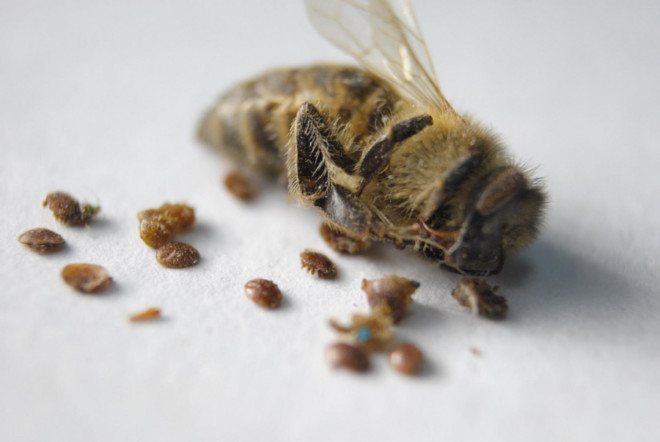

In addition to this disease, parasites can be infected with nosematosis, American foulbrood, paratyphoid fever. When bitten, they infect the bee with pathogens, which most often leads to the mass death of bee colonies.
Signs of infection
The big difficulty lies in the fact that the disease is almost impossible to detect for 2 years. Since the infection develops during this period, it does not manifest itself in any way. Further, the population of mites increases significantly, which leads to the defeat of 30% of the bee colony. At this stage of the development of the infection, you can notice clear signs of infection, since drones and bees have a deformed body, legs and wings are incompletely developed, perhaps even their absence. In addition, the brood will have an uncharacteristic variegated color.
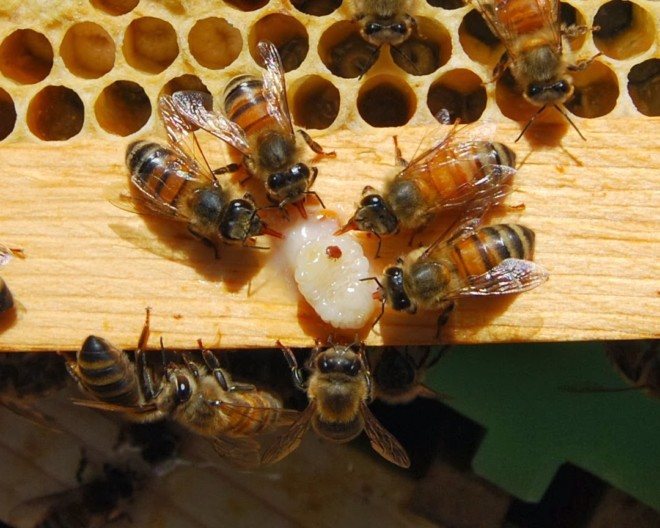

Infestation increases significantly in October and November, and the loss of bees is rapidly increasing. Autumn bees are very emaciated and weakened, already at this stage the colonies may die. The wintering of infected individuals is very restless, they can jump out and make a lot of noise.A large number of dead bees appear at the bottom of the hives, on which mites parasitize.
With a significant infection, the mass death of families can begin as early as the first half of winter. It is a very common situation when, after the main period of honey collection, bee colonies simply leave their hives.
Possible methods of struggle
To get rid of parasites and save bee colonies, you need to apply a number of measures and fight in an integrated manner. It will be necessary to apply organizational, beekeeping and veterinary measures, which are carried out comprehensively and annually. Mandatory measures are special conditions for keeping, breeding and feeding, processing is an integral part of the fight.
An important step is to reduce the parasite population; this must be done after the last pumping of honey has been carried out. This will allow the bees to survive the winter. Although the infection cannot be completely eliminated, it will be reduced to a minimum. The next stage of processing must be carried out in winter, when brood hatching is over. Next, we will consider the most popular and effective methods of struggle.
Chemicals
Quite a popular and effective method, but it has many features.
When using such funds, it is necessary to follow a number of recommendations:
- This method must not be used during the honey collection period, as well as before it begins. This is due to the honey collection, which may start earlier than the planned period, and the spring treatment will lead to the fact that chemicals will get into the honey.
- Only a number of chemicals that are approved for use are allowed for use. This rule is mandatory, its implementation is monitored by quality control authorities, and non-compliance is punishable. All beekeeping products undergo diagnostics, during which the presence / absence of chemical preparations is detected.
- It is imperative that before using any tool, you must study the instructions for use and strictly adhere to its implementation.
- When pumping, a gauze or sieve should be used to separate the wax particles. This will eliminate the possibility of drugs getting into honey.
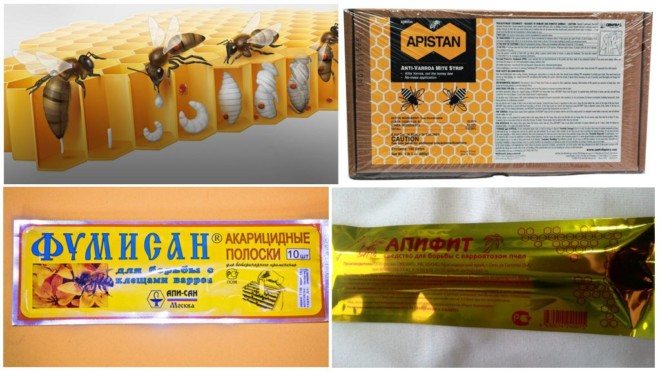

The mechanism of action of such drugs is as follows. The active substances in the composition can have a detrimental effect on varroa mites. The action on ticks can be carried out through toxic fumes or through contact with drugs.
Herbal syrup
A fairly effective remedy that is used in the fight against ticks, and also serves as an excellent preventive method.
To prepare this remedy, you need a decoction of herbs and syrup. To prepare the broth, you need to take 2 tbsp. mint and St. John's wort, as well as 1 tbsp. calendula, pour into a saucepan and pour boiling water over it. You don't need to cook it right away, you need to insist for 15 minutes, and then boil it for another 15 minutes. Separately prepare a very concentrated sugar syrup, then mix with the broth 1: 1. It is used as a top dressing for three weeks.


Capsicum
If you want to use this method, then you should take into account that the processing should not be carried out during the period when the honey is pumped out, as it may affect the taste. But at this time, it can be added to the syrup that is used for feeding. True, some individuals may refuse such a specific delicacy.
And so, both fresh and dry products are suitable for cooking. Fresh product must be chopped with a knife, and powder must be prepared from dry. Then the pepper is poured with water and boiled for 10 minutes. The broth should be infused within a day, after which it is filtered, for this it is necessary to use several layers of gauze. Spraying of bees is carried out 1 to 3 times a week.


Oxalic acid
A fairly effective method, but when using it, certain conditions must be observed, otherwise it will be less effective. The use of oxalic acid or the manufactured drug Rosinka is allowed.
There are 2 options for use:
- First, you need to bring the water to a boil, and then cool it down to a temperature of 30 °. Next, oxalic acid is added to the water in the form of a 2% solution. When processing, it is necessary that the air temperature is not lower than 15 °. This method is applied 4 times per season. Sprayed on frames and streets.
- The second option involves the use of the evaporation method. It should be used during the period when the parasites are still in the brood, namely in early spring, but the air temperature should be more than 10 °. The following proportions should be adhered to, for 12 frames, 2 g of acid are used, a smoke cannon or a smoker is used.
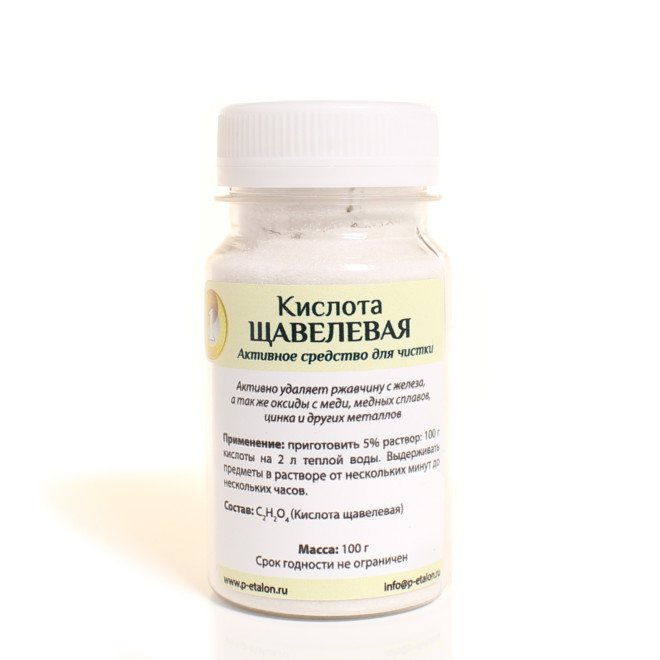

Pine flour
The undoubted advantage of this method is safety for bees, and also has no effect on the quality of honey. Pine flour must be poured into cheesecloth or chintz bag. Gently try to ensure that all individuals of the bee colony are processed. Thanks to the use of pine flour, you can get rid of parasites in 1 day. It is also an ideal preventive method.
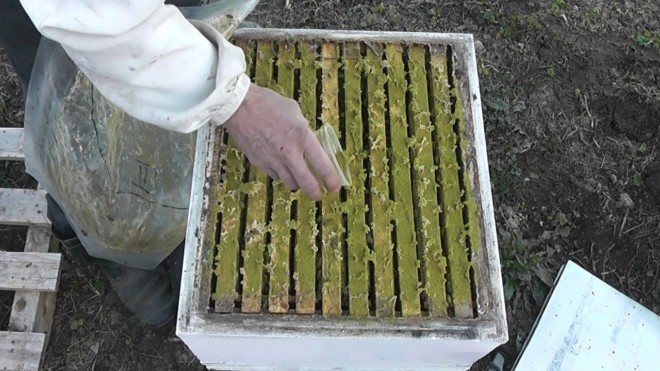

Pericin
This drug has the following mechanism of action. The active substances of the agent penetrate into the blood of bees, when the parasite attacks it, it is saturated with blood, which contains toxic components. Processing is carried out only in winter, when there is no brood. Use at an air temperature of 0 ° C, 2 times with a break of 7 days.
Regarding the consumption of the drug, as the instructions say, a single dose of 50 ml, but practice shows that this amount is too much. Processing is carried out with a dosing set, but if it is not available, it can be easily replaced with a regular disposable syringe and not waste money.
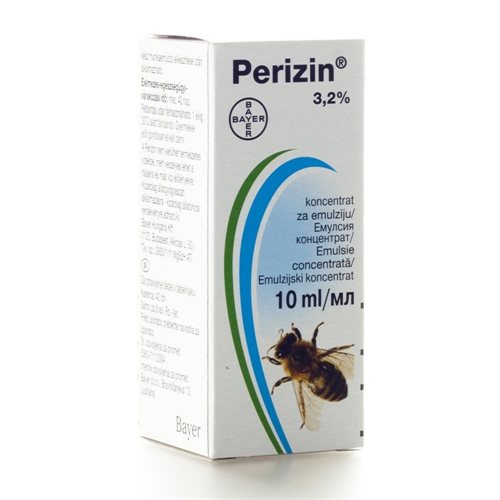

Apitol
With this tool, you must work very carefully and follow the recommendations. You should be aware that the substance dissolves very easily in water and can easily get into honey. It is forbidden to use the substance for feeding. It is produced in the form of a powder, from which it is necessary to prepare an aqueous solution according to the instructions. It is recommended for use only in cases where ticks have developed immunity to other active substances.
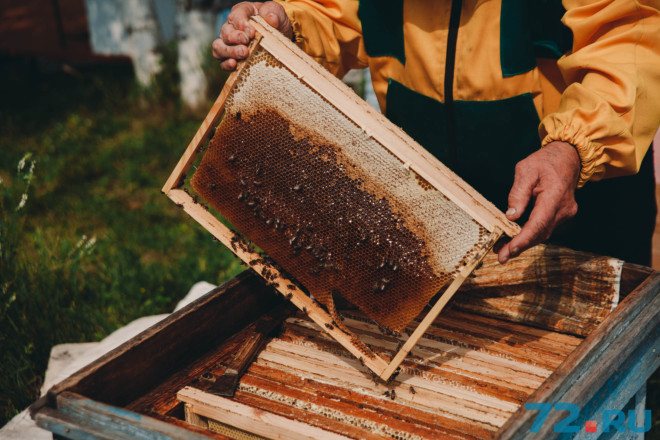

Bipin
The advantage is the effectiveness of a powerful active substance with complete insect safety. In this case, the action is carried out thanks to the amitraz component. It is produced in the form of a concentrated emulsion from which an aqueous solution is prepared. Processing is carried out with a syringe, the solution is applied between the frames. After a week, the procedure is repeated.
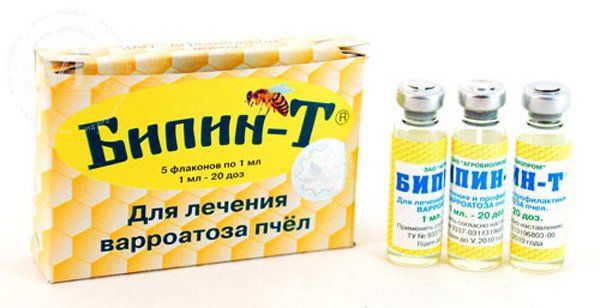

Formic acid
When using this method, Illert tiles are used, which acts due to poisonous fumes. The air temperature should be in the range of 12-20 °, the procedure is carried out with an open tray in the evening. During the honey collection period, use is prohibited.
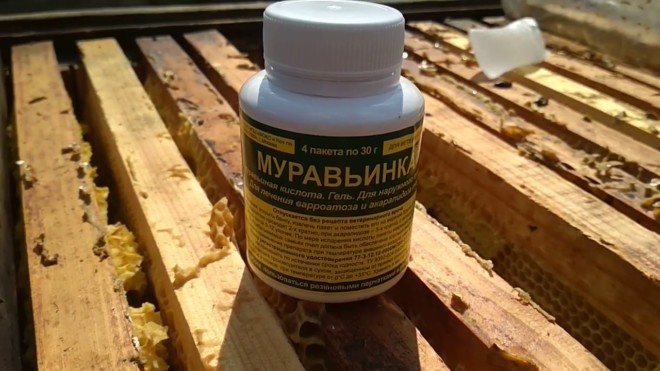

Smoke
This is perhaps the most common method used by both experienced and novice beekeepers. It does not require special training, is safe and easy to use. To do this, the hive is cleaned and fumigated, then a canvas is placed, which is moistened with propolis in a smoke gun, and the procedure is performed. For example, in summer and autumn, oak bark is very effective.
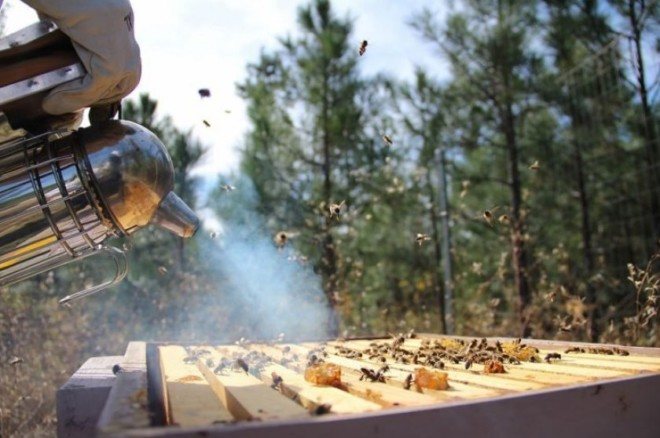

Biotechnical
In this case, the technique involves changing the course of events, which relates to the developmental biology of parasites. Namely, the drone brood is removed, where the clutches of parasite eggs are located. A honeycomb trap is also used, and the uterus is transplanted into an empty honeycomb.You can also use heat treatment, in this case it is carried out by the impact of the rate, namely the temperature, which is destructive for the tick, but safe for insects.
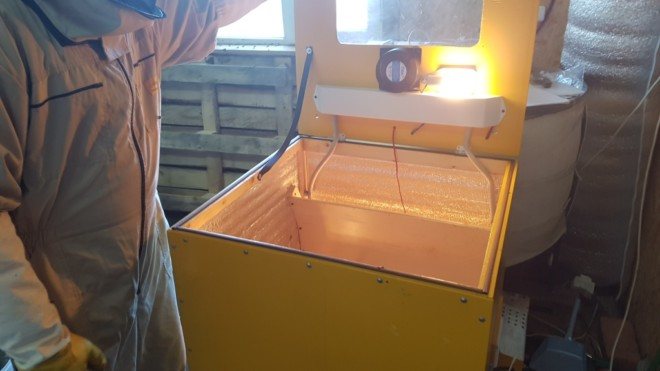

Oxalic and Lactic acids
There are two main groups of acaricides - the group of light acaricides (organic acids - oxalic and lactic), and heavy (amitraz and fluvavinate). Organic acids are considered to be more gentle for bees and honey consumers. At the recent, XIX Congress of Apislavia in Poland, representatives of science made some adjustments to the rules for the use of acids. The amendments relate to the temperature of the acid solution and the ambient temperature when it is used in the treatment of bees. The recommendations say about the preference to carry out anti-varroatous measures in the apiary at a lower ambient temperature. In this case, the acid solution must be cooled. It turned out that a heated solution of oxalic acid, and even in warm weather, once in the body of a bee, causes serious metabolic disturbances in the insect. At the same time, the tongue is burned, which complicates the consumption of feed, especially by the bees of the future winter club. For the same purpose, it is recommended to reduce the concentration of acid in the solution.
Prophylaxis
Remember that preventive action is always required to minimize the chance of infection. For example, in the spring and autumn period, it is necessary to get rid of sealed broods, the first and, accordingly, the last. Pull-out trays are required, which should be cleaned and disinfected regularly, once a week is sufficient.
You will also need to adhere to the following recommendations:
- When purchasing a new family, be sure to check for varroa.
- Remember that hives must be installed at a considerable distance from each other.
- If an infection has occurred, then in most cases, the nearest apiaries are also infected, in order to achieve effectiveness in treatment, it is necessary to carry out joint activities.
- Brood combs should be changed from time to time; it is enough to do this once a year.
- Mandatory autumn processing is carried out, regardless of the degree of infestation.
- Keep the apiary in a dry and sunny place.
- Compliance with sanitary standards is mandatory.
Preventive measures
To prevent infestation with varroa mites, you must:
- check purchased insects for the presence of parasites (if necessary, treat);
- keep strong colonies as much as possible, and connect weak ones, respectively;
- prevent the emergence of a common problem - bee theft;
- destroy frames with the first and last brood;
- install hives in well-ventilated and well-lit areas, at a height of more than 30 centimeters, not very close to each other;
- keep the area where the apiary is located clean, as well as mow the grass in a timely manner;
- limit the reproduction of ticks by carrying out regular seasonal treatments;
- avoid buying infected queens, and if a disease occurs, destroy the accompanying bees;
- in case of treatment, it should be carried out simultaneously in nearby apiaries.
Compliance with the above rules will save the apiary from the occurrence of a dangerous disease among its inhabitants.

